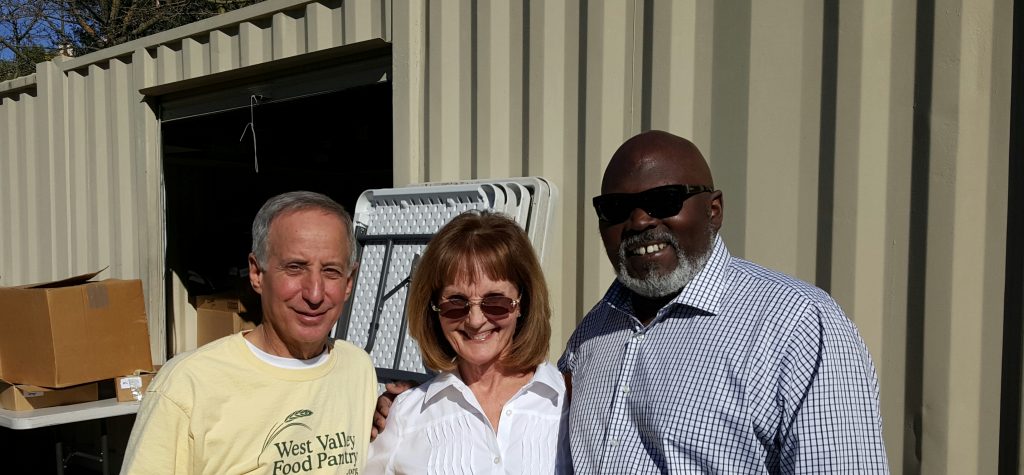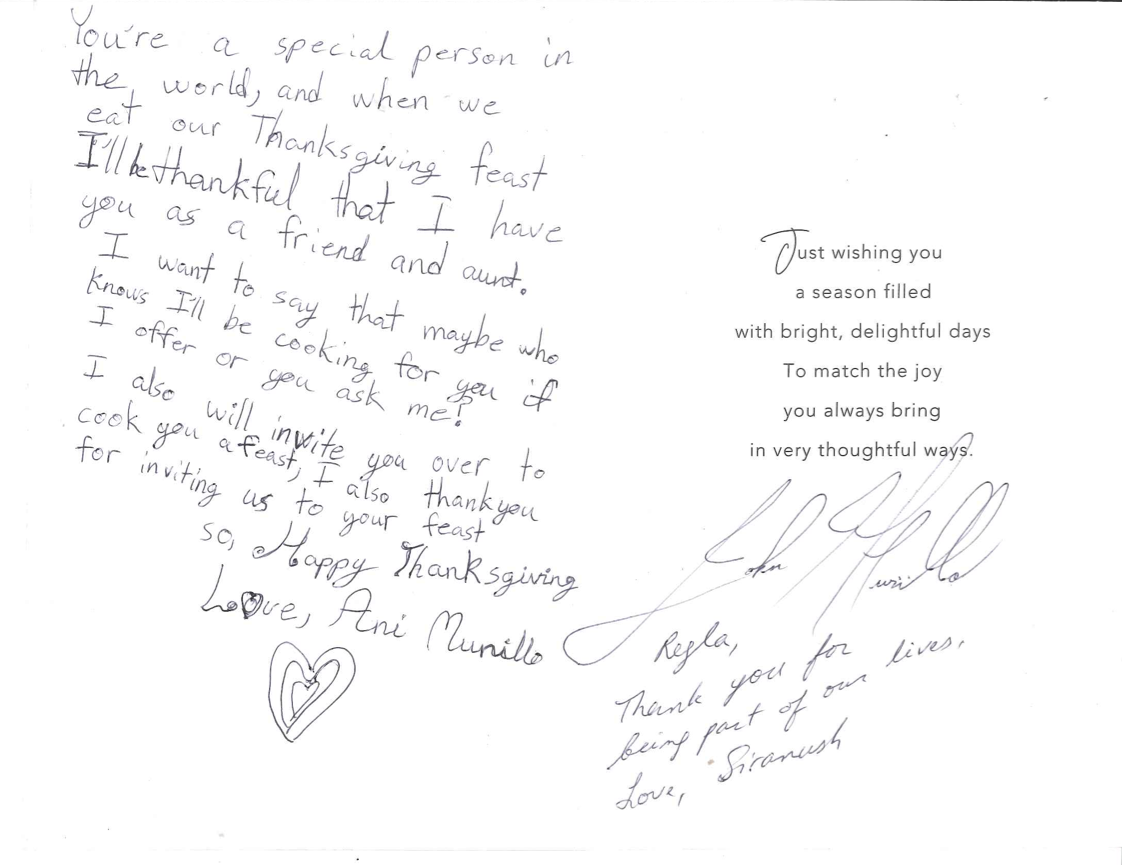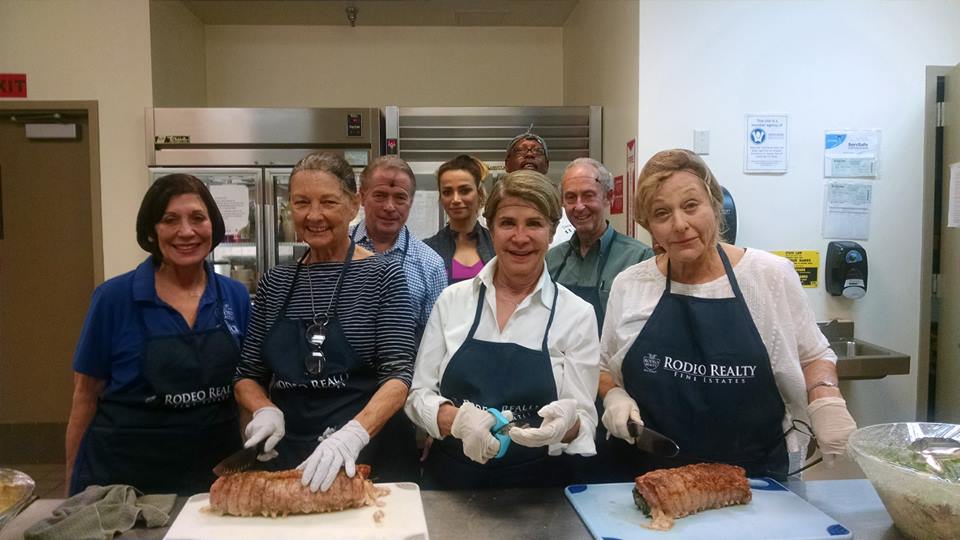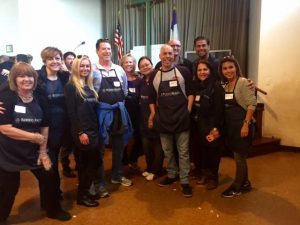Clarence Williams, a realtor with the Calabasas office, will be hosting a food drive for the upcoming holiday season to help benefit the West Valley Food Pantry. The Food Pantry serves over 3,000 people a month in the area and provides over 26,000 meals in that time; this is due to groceries that are given to the pantry, as well as items that are purchased from the LA Food Bank. Clarence is asking for help feeding those in need by donating any non-perishable food items during his benefit, volunteers can do so by leaving the items on their doorsteps, or by contacting him so that he can arrange to pick them up. If anyone has any questions he can be reached at 818.667.2627 regarding the upcoming event date of December 15th.
Rodeo Realty Agent Regla Vera of Sherman Oaks Receives Heartwarming Testimonial
Syd Leibovitch and Rodeo Realty Agents Participate in the Los Angeles Jewish Home “Walk of Ages”
On Sunday, November 15, 2015 many of Rodeo Realty’s agents, as well as Syd, put on their running shoes to participate in the marathon. The early morning event started at 7a.m. at Woodley Park in Van Nuys and this year the company was also an Angel sponsor. The Los Angeles Jewish Home was started in 1912 as a means to give food and shelter to the elderly Jewish community living in the city, 103 years later the organization has 14 programs in place to help care for seniors in the area. Agents were encouraged to come out and support the organization, and Studio City branch manager Wendy Cox did a wonderful job helping with the registration process. Wendy also had this to say about the turnout, “There were around 600 people who showed up for the Walk of Ages on Sunday. The weather was perfect, and this year they raised $130,000 for the home! This was by far the best year yet! Thank you to all who showed up.”
Thanks to all of our agents for waking up at the crack of dawn to support the organization, check out the awesome photos here
Beverly Hills and Brentwood Rodeo Realty Agents Volunteer for OPCC
Here at Rodeo Realty we believe that the world we live in is just as important as the clients we serve. That is why we actively strive to help make it a better place, and that starts with our wonderful agents that volunteer at various organizations throughout the city. Keep up the great work!
Please check out our more photos Here
Rodeo Realty Agent Wendy Dern Organizes Care Packages for the Troops
“For The Troops” is a non-profit, all volunteer organization that sends “We Care” packages to our troops in harms way, throughout the year. The packages are sent to individual service people and include little things from home; from basic toiletries, decks of cards, snacks, personal letters written by volunteers in the community, other comforts, and more. Candy is included in every one of the more than 2000 packages sent per month. For the last 5 years I have sponsored a candy drive to help supply this wonderful organization with as much candy as I could. This year was a very fulfilling year as I got another school participating, (bringing me to 4 schools: Nobel Charter Middle School, Topeka Charter SAS, Gridley Elementary, and Cleveland High School “for The Troops” Club) and support from agents in the Northridge office and my farm. I collected almost 1000 lbs. of candy. Syd generously offered to match “dollars for candy collected” and donated to “For The Troops” organization. 100% of all donations go to sending packages to the troops, either in contents or postage.
If any of our agents or readers is interested in volunteering the organization info is below:
For The Troops
P.O. Box 12
Simi Valley, Ca 93062
(805) 306-0830
Email: usa@forthetroops.org
Headquarters: 2960 Cochran Street, Simi Valley, CA 93065
Rodeo Realty Valley Agents Give Back to the Community by Feeding the Mission
More than 150,000 meals are served to hungry men, women and children annually. 110 homeless mothers and children are sheltered at Genesis House each year as they receive the help they need to stabilize their lives. 50 men enroll in our 9-month recovery program at the House of Hope each year. Thanks to Rodeo Realty agents and their support this organization is able to continue providing for those transitioning through hard times, and once again get back on their feet.
Check out the awesome photos HERE
Beverly Hills Agent Ben Salem Recognized for Being Top One-Percent of Real Estate Agents
LOS ANGELES, Dec. 1, 2015 /PRNewswire/ — Ben Salem, Rodeo Realty, who specializes in luxury residential properties in the most elite communities in and around Los Angeles, was named “Agent of the Month,” by Top Agent Magazine, a publication that carefully selects a chosen few to be featured on its cover, according to the publication’s Executive Publisher, Jessica Fisher.
On the cover of the November, 2015 issue, Salem was chosen because of his consistent high-volume in sales, his innovative approach to marketing and selling real estate, and his passion for the profession. A panel of his peers and other real estate industry professionals were in solid agreement that Salem should receive the coveted honor.
In order to be eligible, a candidate must rank in the top one-percent of real estate agents. Salem is currently not only ranked in that category of real estate agents in the Los Angeles area, he also is among the top five-percent throughout the country.
“This is an amazing honor,” Salem enthused. “I know the publication reserves its cover for the best of the best, and it’s wonderful to join the others who have also received this type of recognition.”
Salem, who caters to celebrities, their agents, managers and business consultants; also assists entrepreneurs and other business professionals in the corporate sector to help them find their ideal residences. While his main concentration is in the Los Angeles area, Salem also has sold luxury properties from Santa Barbara toSan Diego.
Earlier this year, Ben Salem was also nominated for an Inman Innovator Award in the real estate category. Salem is often singled out for his unique approaches, including that of taking his clients “neighborhood shopping” by helicopter. “My clients are often looking for seclusion and privacy,” Salem explains. “Checking out the neighborhoods from the sky gives them a head start.”
For the 15 years Salem has been in the real estate business, he has provided innovative solutions to problems within the real estate industry. He developed a technology that watchdogs real estate fraud and prevents elder abuse in real estate transactions.
Frequently sought out by media for commentary, Salem has been featured on “Good Morning America,” in Yahoo! and the Los Angeles Times.
For more information on Ben Salem visit: www.bensalemproperties.com.
Local Market Report Westside October 2015
Below is the Westside Market Report for October 2015 detailing local real estate market statistics and including year-over-year data:
Westside
Local Market Report Conejo October 2015
Below is the Conjeo Market Report for October 2015 detailing local real estate market statistics and including year-over-year data:
Conejo
Local Market Report SF Valley October 2015
Below is the SF Valley Market Report for October 2015 detailing local real estate market statistics and including year-over-year data:
SF Valley







